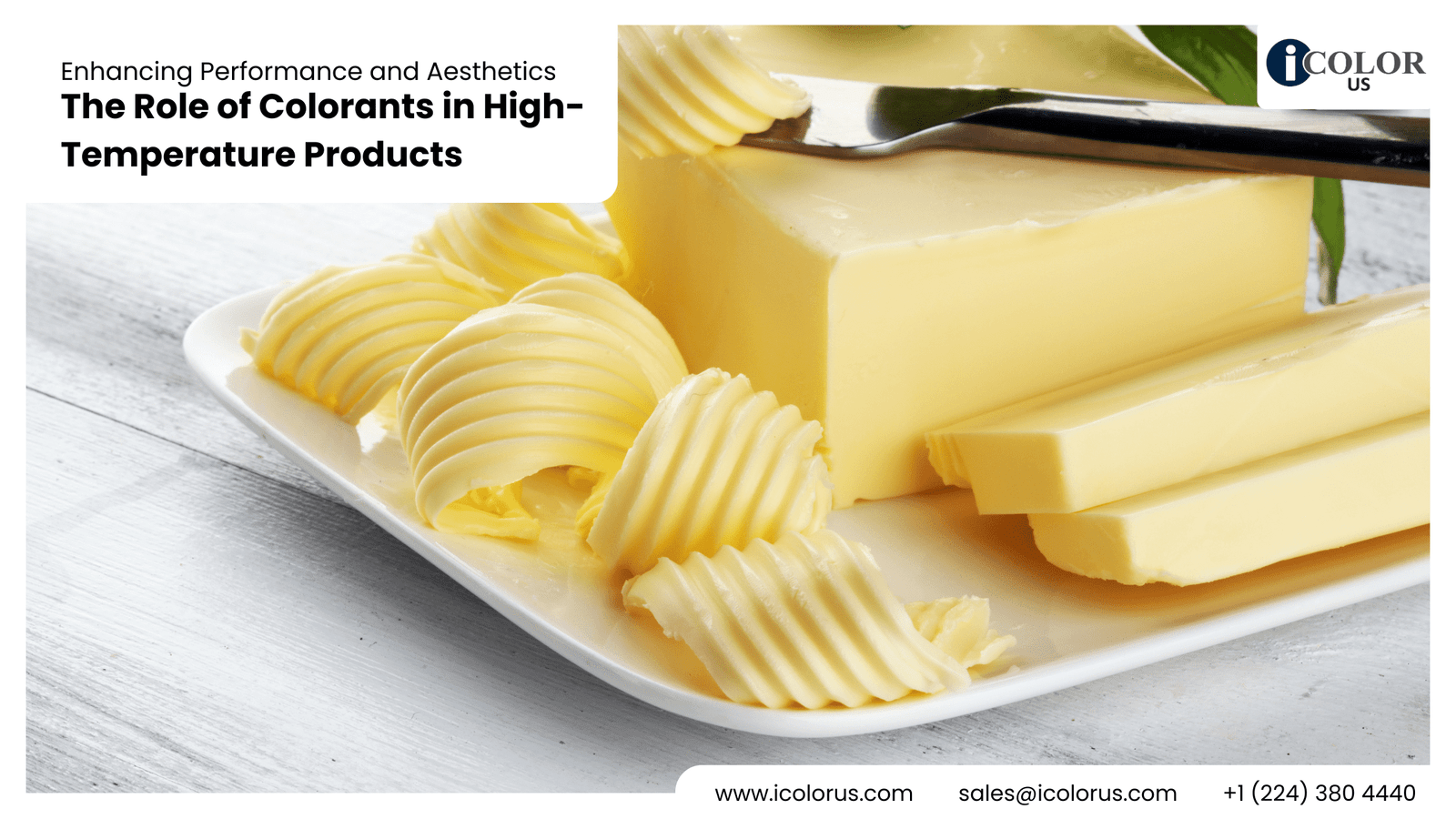Colorants in High-Temperature Products – Outline
Table of Contents
The Role of Colorants in High-Temperature Products
Colorants play a crucial role in enhancing the aesthetic and functional qualities of high-temperature products. These products, which operate under extreme heat conditions, rely on specialized colorants to maintain their appearance and performance. This article delves into the significance of colorants in high-temperature applications, exploring their properties, challenges, and future trends.
Understanding High-Temperature Products
High-temperature products are materials and components designed to withstand and perform under extreme heat. Examples include ceramics, metals, and specialized polymers used in industries such as automotive, aerospace, and manufacturing. These products must endure temperatures ranging from several hundred to over a thousand degrees Celsius without degrading or losing functionality.
What Are Colorants?
Colorants are substances used to impart color to materials. They come in various forms, including pigments and dyes, and can be natural or synthetic. Natural colorants are derived from plants, minerals, and animals, while synthetic colorants are manufactured through chemical processes. The choice between natural and synthetic colorants depends on the application and desired properties.
Importance of Colorants in High-Temperature Products
Aesthetic Value
Colorants add visual appeal to high-temperature products, making them more attractive and marketable. This is particularly important in consumer goods and decorative applications where appearance matters.
Functional Benefits
Beyond aesthetics, colorants can enhance the functionality of high-temperature products. For instance, certain colorants can improve heat resistance, UV stability, and chemical resistance, contributing to the overall performance and durability of the product.
Types of Colorants Used in High-Temperature Applications
Organic Colorants
Organic colorants are carbon-based compounds used for coloring materials. While they offer vibrant colors, their use in high-temperature applications is limited due to lower thermal stability compared to inorganic colorants.
Inorganic Colorants
Inorganic colorants, such as metal oxides and salts, are preferred for high-temperature applications. They exhibit excellent thermal stability, making them suitable for use in extreme heat conditions.
Pigments vs. Dyes
Pigments are insoluble particles that impart color through dispersion, while dyes are soluble substances that impart color through absorption. In high-temperature applications, pigments are generally preferred due to their superior thermal stability.
Properties Required for High-Temperature Colorants
Thermal Stability
High-temperature colorants must withstand extreme heat without degrading or changing color. This property is crucial for maintaining the integrity and appearance of the product.
Chemical Resistance
Colorants used in high-temperature applications must resist chemical reactions that could alter their color or effectiveness. This ensures longevity and reliability in harsh environments.
Color Fastness
Color fastness refers to the resistance of a colorant to fading or changing under various conditions, such as heat, light, and chemicals. High-temperature colorants must maintain their color integrity over time.
Manufacturing Processes Involving High-Temperature Colorants
Coating Processes
High-temperature colorants are often used in coatings to provide both aesthetic and protective functions. These coatings are applied to metals, ceramics, and other materials to enhance their appearance and resistance to heat and corrosion.
Ceramic Glazes
In the ceramics industry, colorants are used in glazes to create decorative and functional finishes. These glazes are formulated to withstand high firing temperatures, ensuring the color remains stable and vibrant.
Metal Treatments
Colorants are also used in metal treatments, such as anodizing and powder coating, to provide durable and heat-resistant finishes. These treatments improve the visual appeal and performance of metal components.
Challenges in Using Colorants at High Temperatures
Degradation of Colorants
One of the main challenges in using colorants at high temperatures is their potential degradation. Some colorants can break down or change color when exposed to extreme heat, compromising the product’s appearance and functionality.
Compatibility with Materials
Ensuring compatibility between colorants and the materials they are applied to is crucial. Incompatible combinations can lead to poor adhesion, color changes, and reduced performance.
Advancements in High-Temperature Colorants
Technological Innovations
Recent technological advancements have led to the development of more robust and stable high-temperature colorants. Innovations in nanotechnology and materials science have produced colorants with enhanced thermal stability and color fastness.
Research and Development
Ongoing research and development efforts are focused on creating new colorants that can withstand even higher temperatures and harsh conditions. This includes exploring new chemical compositions and manufacturing techniques.
Case Studies of High-Temperature Colorant Applications
Automotive Industry
In the automotive industry, high-temperature colorants are used in engine components, exhaust systems, and brake parts. These colorants help improve heat resistance and aesthetic appeal, contributing to the overall performance and marketability of vehicles.
Aerospace Applications
Aerospace applications require materials that can withstand extreme temperatures and harsh environments. High-temperature colorants are used in components such as turbine blades, heat shields, and interior surfaces to ensure durability and visual appeal.
Industrial Machinery
High-temperature colorants are essential in industrial machinery, where they enhance the performance and lifespan of equipment exposed to intense heat. This includes applications in manufacturing, power generation, and chemical processing.
Environmental Considerations
Eco-Friendly Colorants
As environmental concerns grow, there is an increasing demand for eco-friendly colorants. These colorants are formulated to be less toxic and more sustainable, reducing their environmental impact.
Regulatory Standards
Regulatory standards play a crucial role in the development and use of high-temperature colorants. Compliance with environmental and safety regulations ensures that colorants are safe for use and do not pose risks to human health or the environment.
Future Trends in High-Temperature Colorants
Emerging Technologies
Emerging technologies, such as advanced ceramics and high-performance polymers, are driving the development of new high-temperature colorants. These technologies offer opportunities for creating more durable and versatile colorants.
Potential Applications
Future applications of high-temperature colorants are vast and varied. From next-generation electronics to advanced manufacturing processes, these colorants will continue to play a crucial role in innovation and development.
Best Practices for Using High-Temperature Colorants
Selection Criteria
Choosing the right colorant for high-temperature applications involves considering factors such as thermal stability, chemical resistance, and compatibility with the base material. Proper selection ensures optimal performance and longevity.
Application Techniques
Effective application techniques are essential for achieving the desired results with high-temperature colorants. This includes proper surface preparation, coating methods, and curing processes to ensure strong adhesion and color stability.
Conclusion
Colorants are indispensable in high-temperature products, providing both aesthetic and functional benefits. The choice of colorant, application method, and consideration of environmental factors all play a crucial role in the success of these products. As technology advances and new applications emerge, the role of colorants in high-temperature environments will continue to evolve, offering exciting possibilities for various industries.
FAQs
What are high-temperature colorants? High-temperature colorants are substances designed to impart color to materials that are exposed to extreme heat. They are formulated to withstand high temperatures without degrading or changing color.
How do high-temperature colorants differ from regular colorants? High-temperature colorants have enhanced thermal stability and resistance to heat compared to regular colorants. They are specifically engineered to maintain their color integrity under extreme conditions.
Can natural colorants be used in high-temperature applications? While some natural colorants may have limited use in high-temperature applications, synthetic colorants are generally preferred due to their superior thermal stability and durability.
What industries benefit the most from high-temperature colorants? Industries such as automotive, aerospace, manufacturing, and electronics benefit significantly from high-temperature colorants. These colorants enhance the performance and aesthetic appeal of products used in extreme heat environments.
What future developments can we expect in high-temperature colorants? Future developments in high-temperature colorants will likely focus on improving thermal stability, environmental sustainability, and expanding their applications in emerging technologies and industries.





